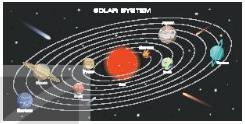Hãy nhập câu hỏi của bạn vào đây, nếu là tài khoản VIP, bạn sẽ được ưu tiên trả lời.

B. Choose the correct answers.
1. What is the passage about?
A. Planets in our solar System
B. The difference between Earth and other planets
C. Space exploration to find habitable planets
D. NASA’s missions to explore the outer planets
2. The Kepler space telescope is looking for__________
A. new planets in our galaxy
B. life on other planets
C. liquid water on other planets
D. Earth-sized planets in the solar System
3. Kepler has found five planets that__________.
A. has water and air
B. are similar to Earth
C. are not too far away from the Earth
D. are not in our solar System
4. The Kepler team predict that they will need__________ to find an Earth-like planet.
A. three years and possibly longer
B. as much as three years
C. no more than three years
D. approximately three years
5. What are the primary factors that make a planet habitable?
A. Liquid water and living things
B. Size and distance from the Sun
C. Hot temperature and weak gravity
D. Strong gravity and too much air
6. How much does the Kepler mission cost?
A. Exactly $600 million
B. About $600 million
C. More than $600 million
D. Less than $600 million
7. Which of the following statements is NOT true?
A. The planet can support life if it has water and air.
B. A very small planet will not have enough air.
C. Earth is four times as big as Neptune.
D. Kepler mission is scheduled to end in 2013.


1. moons
2. rocky surfaces
3. objects
4. huge
5. rings
1. Many of the planets in our solar system have moons.
(Nhiều hành tinh trong hệ mặt trời của chúng ta có mặt trăng.)
2. The four inner planets are quite small and have rocky surface.
(4 hành tinh ở trong nhỏ hơn và có bề mặt đá gồ ghề.)
3. The asteroid belt has millions of rocky objects.
(Vành đai của tiểu hành tinh có hàng triệu vật thể bằng đá.)
4. The outer planets are huge and mostly made up of gas.
(Những hành tinh bên ngoài lớn và chủ yêu được tạo thành từ khí.)
5. These outer planets all have thick layers of clouds and rings around them.
(Những hành tinh bên ngoài này có những lớp mây dày và những vành đai xung quanh chúng.)

Fill in the blanks with a suitabe word. The first letter of the word is already given.
My school has a large library. There are three(1) librarians to help students find (2 )books . In the library , there are a lot of science books such as ( 3) chemistry, (4) physics, (5) biology, (6) maths Besides, there are many English with geography and history books on. english books are so plentiful. There are many English Vietnamese (8) dictionaries. . There are many (9) magazines and (10) newspapers too.

Bài nghe:
Mai: How's life in the city. Tom?
Tom: It's quite convenient. There are places for entertainment like cinemas, theatres, and amusement parks. There are also good schools and universities.
Mai: Sounds great! I guess it is very convenient to get around in big cities.
Tom: Right. There are various means of public transport like buses, trains, and undergrounds.
Mai: So, l don't think you would like living here in the country
Tom: Why not? It's peaceful and spacious. I love nature, green fields, and orchards. I also like riding a bike to school like the children here co
Mai: Yes, things here are simple and lovely. The people in my village are kind and hospitable
Tom: Yes I have noticed that, Mai.
Tạm dịch:
Mai: Cuộc sống ở thành phố thế nào, Tom?
Tom: Nó khá thuận tiện. Có nhiều nơi để giải trí như rạp chiếu phim, nhà hát và công viên giải trí. Ngoài ra còn có các trường học và trường đại học tốt nữa
Mai: Nghe hay đấy! Tớ đoán là rất thuận tiện để đi lại trong các thành phố lớn.
Tom: Đúng rồi. Có nhiều phương tiện giao thông công cộng như xe buýt, xe lửa và tàu điện ngầm.
Mai: Vậy nên tớ không nghĩ rằng cậu sẽ thích sống ở nông thôn.
Tom: Tại sao không? Ở đó thật yên bình và rộng rãi. Tớ yêu thiên nhiên, những cánh đồng xanh và những vườn cây ăn trái. Tớ cũng thích đi xe đạp đến trường, giống như những đứa trẻ ở đây.
Mai: Đúng vậy, mọi thứ ở đây rất đơn giản và đáng yêu. Người dân làng tôi rất tốt bụng và mến khách.
Tom: Ừ tớ cũng cảm thấy vậy Mai ạ.

1. handicapped
2. fitness
3. official
4. organization
5. participants

Đáp án: A
Giải thích: cấu trúc there are + Ns: có…
Dịch: Có rất nhiều hành tinh trong dải ngân hà.